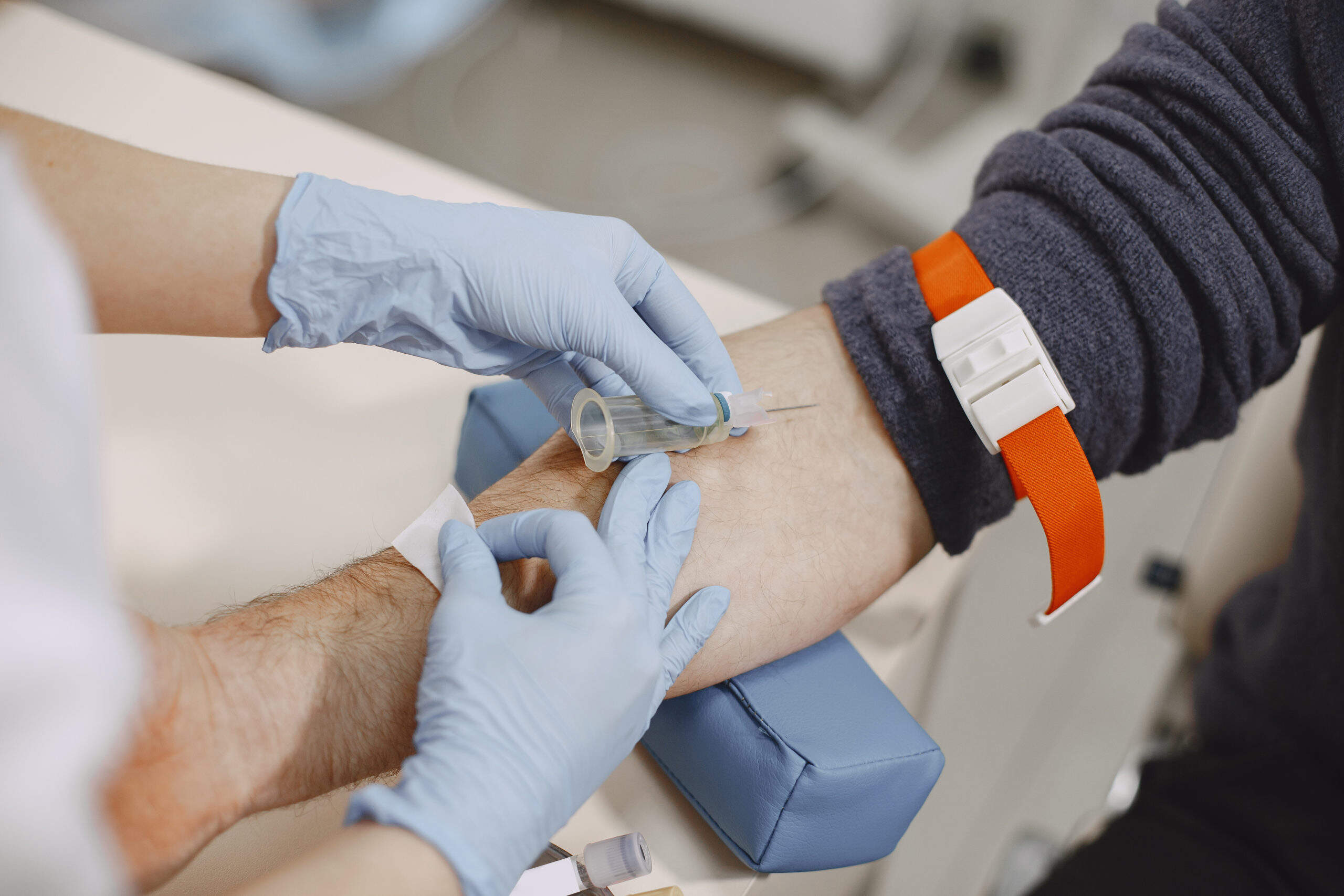
Diagnostic tests play a crucial role in modern medicine, helping doctors identify diseases, conditions, and infections. But what exactly are these tests, and why are they so important? Diagnostic tests range from simple blood tests to complex imaging procedures like MRIs and CT scans. They provide vital information that can guide treatment plans, monitor progress, and even predict future health risks. Understanding these tests can help you make informed decisions about your health. In this post, we'll explore 34 fascinating facts about diagnostic tests that will give you a deeper appreciation for these essential tools in healthcare. Ready to learn more? Let's dive in!
Key Takeaways:
- Diagnostic tests help doctors identify diseases and injuries using tools like blood tests, X-rays, and ultrasounds. They provide accurate information for personalized treatment and early detection of health issues.
- While diagnostic tests offer many benefits, they also have risks and limitations, such as radiation exposure and false results. Innovations like AI and wearable devices are improving the accuracy and accessibility of diagnostic testing.
What Are Diagnostic Tests?
Diagnostic tests are medical tools used to identify diseases, conditions, or injuries. They help doctors make accurate diagnoses and determine the best treatment plans. Here are some fascinating facts about diagnostic tests.
-
Blood Tests: Blood tests can reveal a lot about your health, from cholesterol levels to organ function. They are often the first step in diagnosing many conditions.
-
X-Rays: X-rays use radiation to create images of the inside of your body. They are commonly used to check for broken bones.
-
MRI Scans: Magnetic Resonance Imaging (MRI) uses powerful magnets and radio waves to create detailed images of organs and tissues. It’s especially useful for brain and spinal cord issues.
-
CT Scans: Computed Tomography (CT) scans combine X-rays taken from different angles to create cross-sectional images. They provide more detail than regular X-rays.
-
Ultrasound: Ultrasound uses sound waves to produce images of the inside of the body. It’s often used during pregnancy to check on the baby’s development.
How Diagnostic Tests Work
Understanding how these tests work can demystify the process and make it less intimidating.
-
Blood Sample Collection: Blood is usually drawn from a vein in your arm using a needle. The sample is then sent to a lab for analysis.
-
Radiation in X-Rays: X-rays pass through the body and are absorbed at different rates by different tissues, creating an image on a special film or digital sensor.
-
Magnetic Fields in MRI: MRI machines generate a strong magnetic field that aligns hydrogen atoms in the body. Radio waves then disrupt this alignment, and sensors detect the energy released as atoms return to their original state.
-
CT Scan Slices: CT scanners take multiple X-ray images from different angles. A computer processes these images to create cross-sectional "slices" of the body.
-
Sound Waves in Ultrasound: Ultrasound devices emit high-frequency sound waves that bounce off tissues and organs. The echoes are captured and turned into images.
Common Uses of Diagnostic Tests
These tests are used in various medical fields to diagnose and monitor conditions.
-
Cancer Detection: Mammograms, MRIs, and CT scans are often used to detect tumors and monitor cancer treatment.
-
Heart Disease: Electrocardiograms (ECGs) and echocardiograms help diagnose heart conditions by measuring electrical activity and visualizing heart structures.
-
Infections: Blood tests and cultures can identify bacterial, viral, and fungal infections.
-
Bone Fractures: X-rays are the go-to method for diagnosing broken bones.
-
Pregnancy Monitoring: Ultrasounds are routinely used to monitor the health and development of a fetus.
Advanced Diagnostic Tests
Some tests are more specialized and provide detailed information about specific conditions.
-
PET Scans: Positron Emission Tomography (PET) scans use radioactive tracers to visualize metabolic processes in the body, often used in cancer diagnosis.
-
Genetic Testing: These tests analyze DNA to identify genetic disorders or predispositions to certain diseases.
-
Biopsies: A small sample of tissue is removed and examined under a microscope to diagnose conditions like cancer.
-
Endoscopy: A flexible tube with a camera is inserted into the body to view the digestive tract or other internal organs.
-
Electromyography (EMG): This test measures muscle response to nerve stimulation, helping diagnose neuromuscular disorders.
Benefits of Diagnostic Tests
Diagnostic tests offer numerous benefits, making them indispensable in modern medicine.
-
Early Detection: Early diagnosis of diseases like cancer can significantly improve treatment outcomes.
-
Accurate Diagnosis: These tests provide precise information, helping doctors make accurate diagnoses.
-
Monitoring Progress: They allow doctors to monitor the effectiveness of treatments and make necessary adjustments.
-
Preventive Care: Regular screenings can detect potential health issues before they become serious.
-
Personalized Treatment: Genetic tests can help tailor treatments to an individual’s genetic makeup.
Risks and Limitations
While beneficial, diagnostic tests also have risks and limitations.
-
Radiation Exposure: X-rays and CT scans expose patients to small amounts of radiation, which can be harmful over time.
-
False Positives/Negatives: No test is 100% accurate. False results can lead to unnecessary treatments or missed diagnoses.
-
Invasive Procedures: Some tests, like biopsies, are invasive and carry risks of complications.
-
Cost: Advanced diagnostic tests can be expensive and may not be covered by insurance.
-
Anxiety: Waiting for test results can cause significant stress and anxiety for patients.
Innovations in Diagnostic Testing
The field of diagnostic testing is constantly evolving, with new technologies improving accuracy and accessibility.
-
Artificial Intelligence: AI is being used to analyze medical images and predict disease outcomes with high accuracy.
-
Wearable Devices: Devices like smartwatches can monitor vital signs and detect irregularities in real-time.
-
Point-of-Care Testing: Portable devices allow for rapid testing at the patient’s bedside, improving turnaround times.
-
Telemedicine: Remote diagnostic tools enable doctors to assess patients from a distance, expanding access to care.
The Final Word on Diagnostic Tests
Diagnostic tests play a crucial role in modern medicine. They help doctors identify diseases early, guide treatment plans, and monitor patient progress. From blood tests to imaging scans, these tools provide valuable insights into our health. Understanding how they work and their importance can empower patients to make informed decisions about their care.
While some tests might seem intimidating, knowing their purpose can ease anxiety. Always discuss any concerns with your healthcare provider. They can explain why a test is necessary and what the results mean for your health.
Staying informed about diagnostic tests ensures you’re an active participant in your healthcare journey. Knowledge is power, and in this case, it can lead to better health outcomes. So next time your doctor orders a test, you'll know it's a step towards maintaining or improving your well-being.
Frequently Asked Questions
Was this page helpful?
Our commitment to delivering trustworthy and engaging content is at the heart of what we do. Each fact on our site is contributed by real users like you, bringing a wealth of diverse insights and information. To ensure the highest standards of accuracy and reliability, our dedicated editors meticulously review each submission. This process guarantees that the facts we share are not only fascinating but also credible. Trust in our commitment to quality and authenticity as you explore and learn with us.


